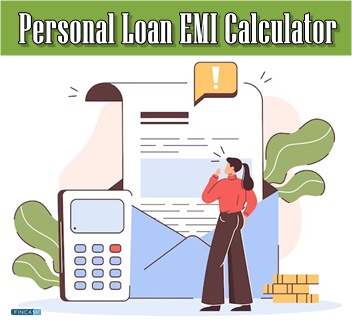Good Loan vs Bad Loan: How to Borrow Smart and Avoid the EMI Trap in India
Every day, nearly 20 people in India take their own lives due to loan pressure. That’s over 7,000 families shattered annually — all because of the wrong borrowing decisions.
With personal loans, credit cards, Buy Now Pay Later (BNPL), and EMIs on almost everything — from smartphones to holidays — borrowing money has never been easier.
But here’s the truth:
Some loans build your future. Others silently destroy it.
The difference between a Good Loan and a Bad Loan could decide whether you build wealth or spiral into debt.
You can also watch the full explainer video here: Good Loan vs Bad Loan
The Indian Credit Boom – A Warning Sign
According to the RBI Financial Stability Report (June 2024):
- Personal loans in India grew by over 24% year-on-year.
- Credit card spending crossed ₹1.5 lakh crore in a single month for the first time.
- Unsecured retail loans (like personal loans and credit cards) are rising faster than secured loans.
Banks are already provisioning ₹25,000+ crore for potential defaults — a clear sign that the credit bubble is swelling.
Talk to our investment specialist
The Story of Rahul & Aditya – Same Salaries, Different Futures
Meet Rahul and Aditya, two college friends who started their careers with similar salaries.
- Rahul took a ₹30 lakh Home Loan — a big risk, but kept his EMI under 50% of his Income.
- Aditya took a ₹10 lakh personal loan for a lavish wedding, the latest iPhone, and an exotic honeymoon.
Five years later:
Rahul has repaid 50% of his home loan, lives in his own home now worth ₹60 lakh.
Aditya is still repaying his personal loan, has paid ₹3 lakh in interest alone, owns no assets, and his Credit Score is so low no Bank will lend to him.
Overview - Rahul vs Aditya
| Aspect | Rahul (Home Loan) | Aditya (Personal Loan) |
|---|---|---|
| Loan Amount | ₹30 lakh | ₹10 lakh |
| Purpose | Buying a house | Wedding + Gadgets + Trip |
| Interest Rate | 7.5% | 20% |
| Asset Value | ₹60 lakh (appreciated) | ₹0 (no assets) |
| Status Today | Strong credit score | Low credit score |
Good Loan vs Bad Loan – The Key Difference
What is a Good Loan?
A Good Loan either:
- Adds to your assets (e.g., home, gold, property), or
- Increases your income potential (e.g., education, business investment).
Examples:
- Home Loan – Builds an appreciating asset and offers tax benefits under Section 80C and Section 24.
- education loan – Can lead to higher-paying jobs and better career opportunities.
- Secured Loan Against FD or Gold – Lower interest rates, quick liquidity, and no damage to your credit score.
- business loan (for growth) – If it generates profits higher than the interest cost.
What is a Bad Loan?
A Bad Loan is taken for consumption rather than creation — often for status or social validation.
Examples:
- Personal Loans for Luxury Spending – Gadgets, holidays, weddings at 16–24% interest
- Credit Card Debt – Rolling balances at 40–45% annual interest
- Car Loans for Upgrades – Depreciating assets with no income return unless used commercially
Overview - Good Loan vs Bad Loan Chart
| Feature | Good Loan | Bad Loan |
|---|---|---|
| Adds to Assets | ✅ Yes | ❌ No |
| Increases Income | ✅ Yes | ❌ No |
| Tax Benefits | ✅ Often | ❌ Rare |
| Interest Rate | ⬇ Lower | ⬆ Higher |
| Example | Home loan | Luxury trip on credit card |
Why Bad Loans Are Financial Poison
- High Interest Rates – A ₹10 lakh personal loan at 20% over 5 years costs ₹6.6 lakh in interest.
- No Asset Creation – Everything bought depreciates or becomes outdated.
- Credit Score Damage – Missed EMIs can drop your score drastically, locking you out of future borrowing.
- Debt Spiral – Using one loan to pay another leads to financial collapse.
The AA Rule – A Simple Loan Checklist
Before taking any loan, ask yourself:
- Will this loan Add to my Assets?
- Will it Add to my Income?
If the answer to both is No, reconsider.
Safe Borrowing Limits
- Keep total EMIs (excluding home loan) under 25–30% of your monthly income.
- Read the fine print: processing fees, late payment penalties, interest rate type (fixed/floating).
- Avoid impulse borrowing — think about long-term sustainability, not just eligibility.
The Emotional Cost of Bad Debt
Financial Stress doesn’t just impact your bank account — it affects mental health, relationships, and life milestones.
Repairing a Bad Credit score can take 5–7 years of discipline. That’s 5–7 years of delayed dreams.
FAQs – Borrowing in India
1. Is it ever okay to take a personal loan?
A: Yes, if it’s for emergencies or to consolidate high-interest debt into a lower rate, and repayment is manageable.
2. How much EMI is safe for my salary?
A: Keep non-home-loan EMIs under 25–30% of your monthly income.
3. Does closing a loan early help my credit score?
A: Yes, paying off loans early reduces interest costs and improves credit utilisation, boosting your score.
4. Is a car loan a good loan?
A: Only if used for commercial purposes or business — otherwise, it’s a depreciating asset.
5. What happens if I miss one EMI?
A: Your credit score can drop 50–100 points and you may face penalties. Repeated misses can make you ineligible for future loans.
Conclusion – Borrow With Purpose, Not Pressure
A loan isn’t free money — it’s a liability with a timer. Used wisely, it’s a ladder to:
- Better housing
- Higher education
- Business growth
- Used recklessly, it’s a fast track to:
- Financial ruin
- Emotional stress
- Lost opportunities
Final Thought
Don’t just ask “Can I get the loan?” — ask “Should I take the loan?” One honest moment before signing can save lakhs of rupees and years of regret.
All efforts have been made to ensure the information provided here is accurate. However, no guarantees are made regarding correctness of data. Please verify with scheme information document before making any investment.







